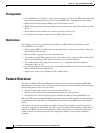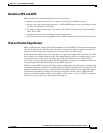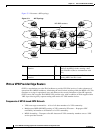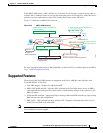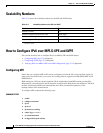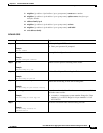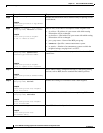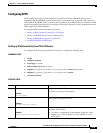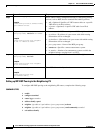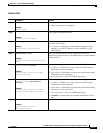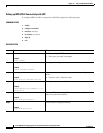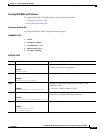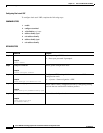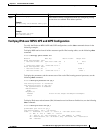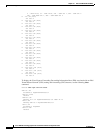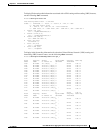
37-10
Cisco ASR 901 Series Aggregation Services Router Software Configuration Guide
OL-23826-09
Chapter37 IPv6 over MPLS: 6PE and 6VPE
How to Configure IPv6 over MPLS: 6PE and 6VPE
Setting up MP-BGP Peering to the Neighboring PE
To configure MP-BGP peering to the neighboring PE routers, complete the following steps:
SUMMARY STEPS
1. enable
2. configure terminal
3. router bgp as-number
4. address-family vpnv6
5. neighbor {ip-address | ipv6-address | peer-group-name} activate
6. neighbor {ip-address | ipv6-address | peer-group-name} send-community extended
7. exit-address-family
Step 4
address-family ipv6 [vrf
vrf-name
]
Example:
Router(config-router)# address-family
ipv6 labeled-unicast
Enters address family configuration mode for configuring routing
sessions, such as BGP, that use standard IPv6 address prefixes.
• vrf—(Optional) Specifies all VRF instance tables or a specific
VRF table for an IPv6 address.
• vrf-name—(Optional) A specific VRF table for an IPv6
address.
Step 5
neighbor {
ip-address
|
ipv6-address
|
peer-group-name
} remote-as
as-number
Example:
Router(config-router-af)# neighbor
10.108.1.2 remote-as 65200
Adds an entry to the BGP or multiprotocol BGP neighbor table.
• ip-address—IP address of a peer router with which routing
information will be exchanged.
• ipv6-address—IPv6 address of a peer router with which routing
information will be exchanged.
• peer-group-name—Name of the BGP peer group.
• remote-as—Specifies a remote autonomous system.
• as-number—Number of an autonomous system to which the
neighbor belongs, ranging from 1 to 65535.
Step 6
neighbor {
ip-address
|
ipv6-address
|
peer-group-name
} activate
Example:
Router(config-router-af)# neighbor
10.0.0.44 activate
Enables the exchange of information with a BGP neighbor.
Step 7
exit-address-family
Example:
Router(config-router-af)#
exit-address-family
Exits BGP address-family submode.
Command Purpose



